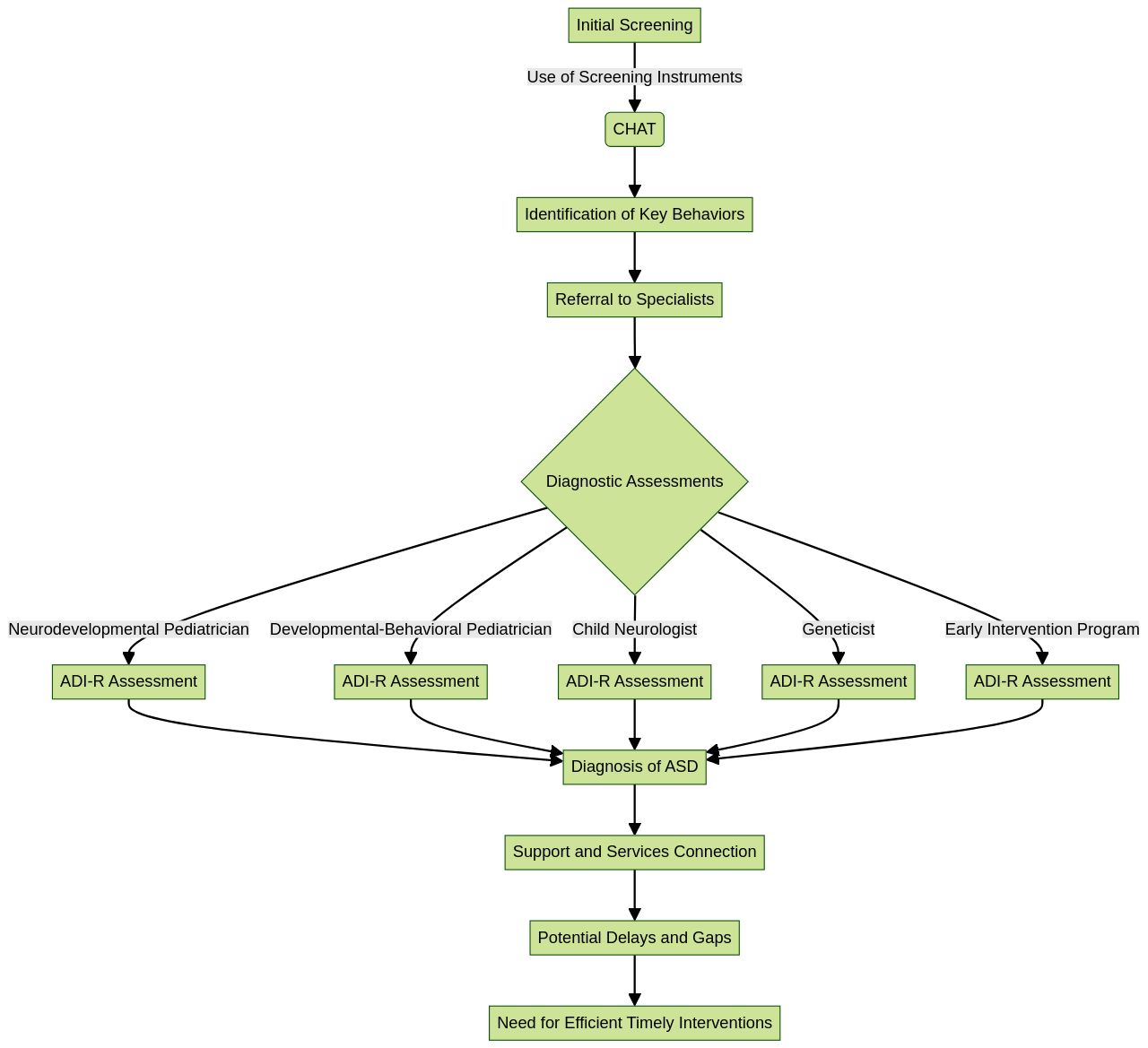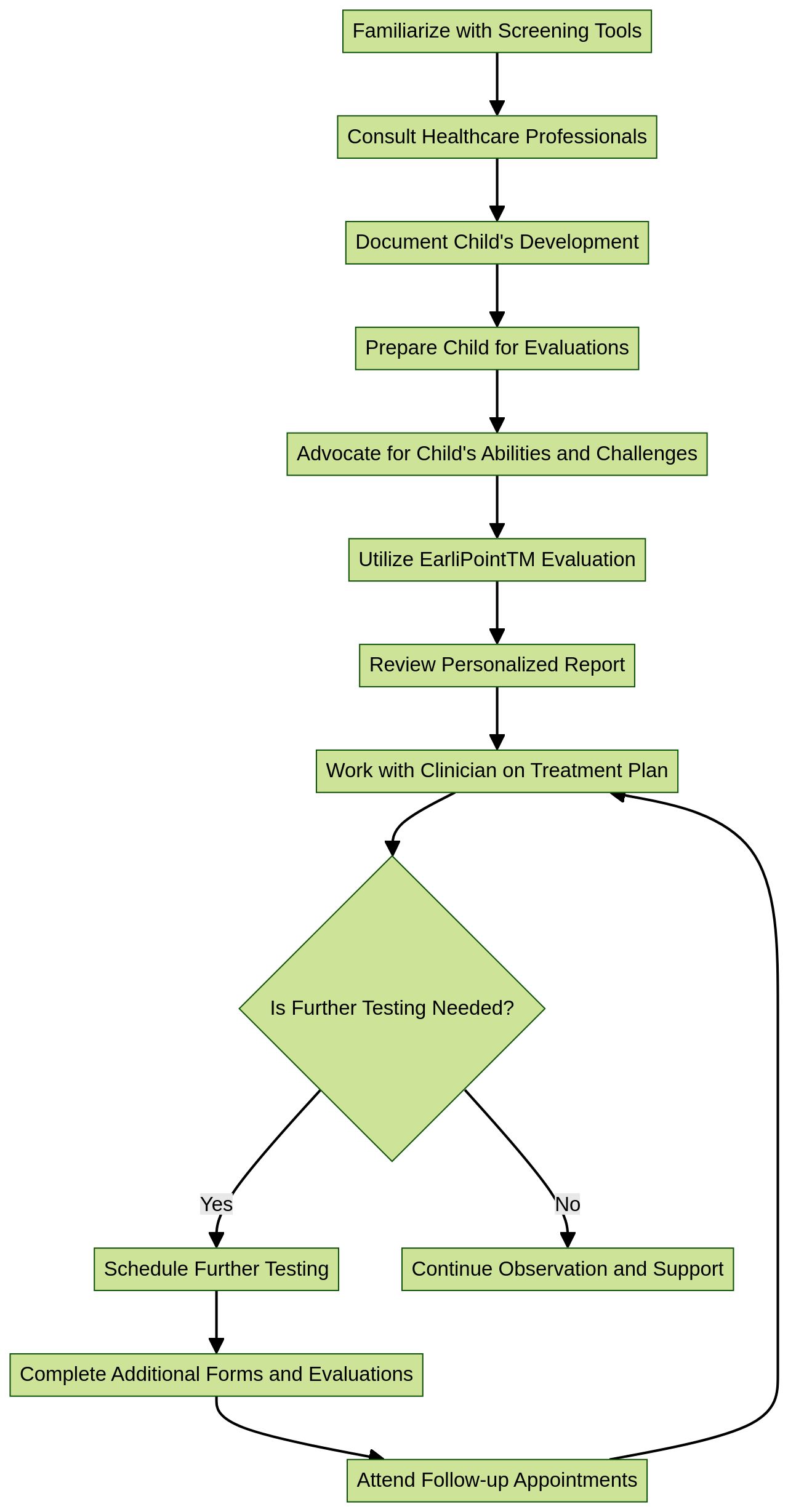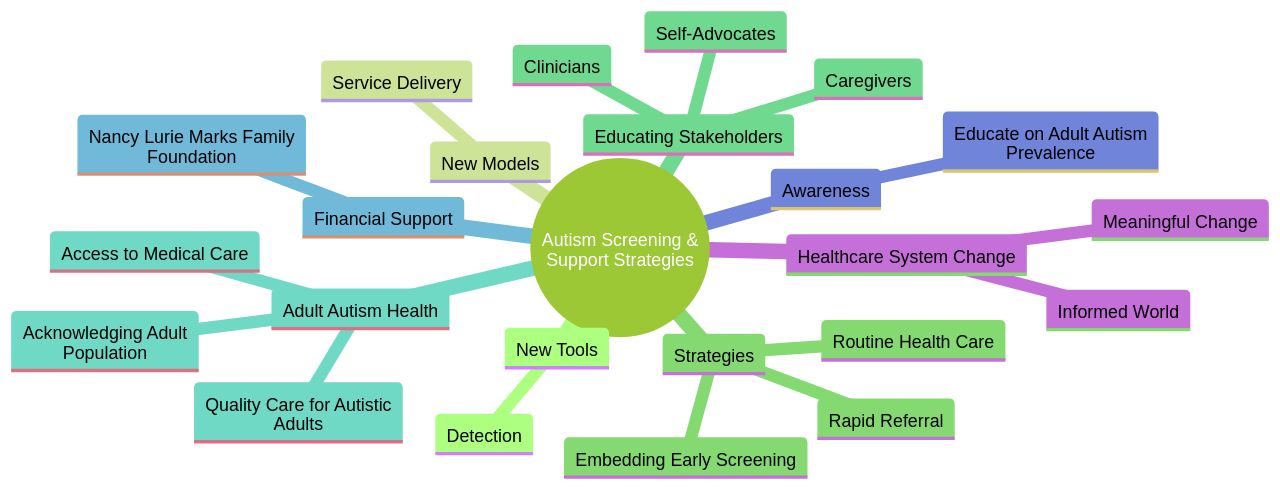Introduction
Autism Spectrum Disorder (ASD) is a complex neurodevelopmental condition that presents diverse challenges affecting social communication and behavior. Early and accurate diagnosis is critical, but the transition from screening to diagnosis often spans over two years, leaving children without the timely support they need.
In this article, we will explore the importance of early screening and diagnosis for children with ASD and provide tips for parent advocates navigating the screening process. We will also discuss effective communication with healthcare providers and the significance of building a support network through community resources. Join us as we empower parent advocates to ensure the well-being and thriving of their children with autism.
Understanding Autism Spectrum Disorder
Autism Spectrum Disorder (ASD) is a complex neurodevelopmental condition that presents diverse challenges affecting social communication and behavior. It is essential to recognize that while ASD is usually evident by age 3, the full spectrum of symptoms may not be clear until social demands surpass a child's coping skills.
Some children may even develop coping strategies that mask challenges, making early and accurate diagnosis critical. A multidisciplinary team of professionals is often required to evaluate ASD, looking at communication, behavior, and development levels.
Recent studies emphasize the importance of understanding autism within the family context. Groundbreaking research led by Dr. Maggie O'Haire's lab at the University of Arizona College of Veterinary Medicine has revealed the positive impact of service dogs on families with children with autism.
These dogs not only support the child's emotional well-being but also enhance the resilience and social connections of the entire family unit. Such findings, published in Frontiers of Psychiatry, underscore the need for interventions that consider the family as a whole.
Despite misconceptions, autism is not caused by vaccines, parenting styles, or nutrition. Genetic research suggests a hereditary pattern, although no single gene has been pinpointed as the cause.
Brain scans show structural differences in individuals with ASD, yet the exact cause remains under investigation. It's vital to dispel misinformation and support families with accurate information and resources. Statistics underscore the urgency of addressing ASD, with recent data indicating that 1 in 36 children are now diagnosed with the condition. This rise calls for increased awareness, early detection, and effective interventions. It's also crucial to recognize that ASD manifests differently in adults and can often go undiagnosed. As society becomes more aware of autism, it is important to continue research and provide support for those affected by ASD across the lifespan.

The Importance of Early Screening and Diagnosis
Recognizing the signs of Autism Spectrum Disorder (ASD) at an early age is crucial for the well-being of children. A study has shown that it's possible to detect autism as early as 18 months, particularly in children who have a higher genetic risk.
Early screening, such as the CHAT instrument used by general practitioners, can identify key behaviors like pretend play and joint-attention. These early indicators are critical; in the study, toddlers who exhibited two or more of these behaviors at 18 months were later diagnosed with autism by 30 months.
The implications of early diagnosis are profound. With only 10-20% of individuals diagnosed with ASD before the age of 5 achieving independent living as adults, early intervention becomes a beacon of hope for improved outcomes.
Research underscores that the earlier behavioral interventions begin, the more impactful they can be, given the plasticity of young children's brains. This is why the American Academy of Pediatrics recommends screening at 18 and 24 months.
However, despite these guidelines, the transition from initial screening to diagnosis often spans over two years, leaving the average age of diagnosis stagnated around 4 years old since 2000. This delay in diagnosis is alarming and emphasizes the need for more efficient pathways to connect children with the support and services they require. Furthermore, while many intervention programs exist, they are not universally known or accessible, and empirical studies comparing their effectiveness are scarce. Statistics reveal that a significant majority of children with an early autism designation continue to be identified as having ASD after their third birthday. This consistency in diagnosis over time highlights the reliability of early screening and the importance of ongoing observation and support for children as they develop. By closing the gap between screening and diagnosis, we can ensure that children with ASD receive the timely intervention they need to thrive.

Navigating the Screening Process: Tips for Parent Advocates
Embarking on the journey to determine if a child falls within the Autism Spectrum Disorder (ASD) can be a complex and emotional experience. It's essential to approach the process with knowledge and support.
Start by familiarizing yourself with the various screening tools and assessments. Knowledge is power, and understanding the intricacies of these tools will prepare you for the journey ahead.
Consulting with healthcare and autism specialists is invaluable; they can offer insights and guide you through the maze of information, ensuring you have the necessary facts at your fingertips. Documentation is key; meticulously recording your child's developmental progress and any concerning behaviors can provide a clear picture during evaluations.
Preparing your child for what lies ahead can alleviate some anxieties. Explain the process in simple terms and engage in comforting routines.
Remember, as an advocate for your child, your role is to ensure their unique abilities and challenges are recognized and accounted for during the screening process. This proactive approach is crucial because early diagnosis can significantly impact the availability of services, with children diagnosed by age 4 being fifty times more likely to receive support. Yet, disparities persist, as recent statistics show that Hispanic children and those of color still face delayed diagnoses compared to their White counterparts, highlighting the urgent need for accessible healthcare and early screening tools. Innovations like the EarliPointTM Evaluation, an eye-tracking diagnostic technology, are promising strides toward objective and expedited diagnoses, allowing for earlier interventions that have been proven to improve outcomes. With these tools and an informed, proactive stance, parent advocates can navigate the screening process more effectively, leading to earlier support and improved quality of life for children with autism.

Effective Communication with Healthcare Providers
When it comes to navigating the autism screening process, it's crucial for parents to engage in clear and meaningful dialogue with healthcare providers. To ensure your child receives the best assessment and support, consider these strategies:
- Write Down Questions: Before your appointment, jot down any queries or concerns. This preparation ensures that you cover all vital topics during the consultation.
- Active Listening: Pay close attention to what the healthcare provider shares. If there's anything you don't understand, don't hesitate to ask for more details. - Detailed Sharing: Offer comprehensive information about your child's behavior, developmental progress, and any particular concerns you've observed.
This helps healthcare professionals form a clearer picture of your child's needs. - Collaboration is Key: Your observations and insights are invaluable. Work alongside healthcare providers to contribute to a thorough and accurate assessment of your child.
- Note-taking: Keep a record of the conversation. Notes can be a reliable reference for important advice and instructions provided by the healthcare provider. Remember, while screening tools like the Social Communication Questionnaire (SCQ) are beneficial for identifying children who may require further assessment, they are not diagnostic.
With a hit rate of 65%, the SCQ highlights the need for a detailed follow-up evaluation, as it can have a significant false-negative rate of 28% and a false-positive rate of 38% at a cutoff score of 15. A comprehensive medical examination is crucial to determine if any underlying medical issues need attention and to refer children to early intervention or special education services if necessary. Collaborating with healthcare professionals and utilizing these strategies can lead to early detection and intervention, which is pivotal for children's development, as recent advancements have made it possible to identify signs of autism as early as 12 to 14 months.
Building a Support Network: Leveraging Community Resources
Navigating autism screening and diagnosis requires a robust support system, and here are some actionable strategies to enhance community engagement and foster meaningful connections:
- Joining Forces with Fellow Parents: Seek out support groups or online forums to share experiences and strategies with parents who understand the journey you are on.
These spaces can provide solace and practical advice from those who have walked a similar path. 2.
Harnessing Local Expertise: Tap into the knowledge of local organizations and non-profits that specialize in autism support. These entities often offer valuable resources that can help families navigate the complexities of autism.
- Gaining Knowledge through Workshops: Educate yourself by attending seminars and workshops that focus on autism spectrum disorders.
Such events can deepen your understanding of social communication challenges, particularly joint attention, which is crucial for children with autism. 4.
Building Relationships with Professionals: Forge connections with experienced autism professionals, therapists, and educators. Their expertise can be instrumental in guiding you through the screening process and beyond, ensuring that interventions are personalized and effective. 5. Emphasizing Self-Care: Remember to look after your own well-being. Lean on friends, family, or professionals for support, and make time for self-care to maintain your resilience. By implementing these strategies, parent advocates can create a nurturing environment for their children, while also ensuring their own needs are met. This holistic approach can lead to more positive outcomes for families dealing with the early signs of autism.

Conclusion
In conclusion, early screening and diagnosis are vital for children with Autism Spectrum Disorder (ASD) to ensure their well-being and thriving. Recognizing the signs of ASD at an early age can lead to timely intervention and improved outcomes.
However, the transition from screening to diagnosis often takes too long, leaving children without the necessary support. Parent advocates play a crucial role in navigating the screening process by familiarizing themselves with screening tools, consulting with healthcare professionals, and documenting their child's developmental progress.
Effective communication with healthcare providers is also essential, involving active listening, detailed sharing of information, and collaboration. Building a support network through community resources enhances engagement and fosters meaningful connections for both parents and children. By implementing these strategies, parent advocates can empower themselves to ensure that their children receive the necessary support and services they need to thrive. Together, we can make a difference in the lives of children with autism.




